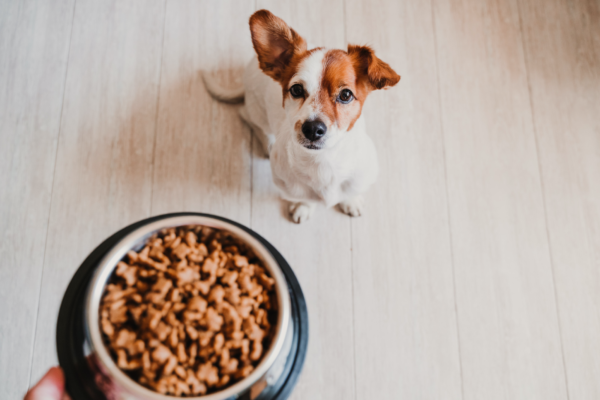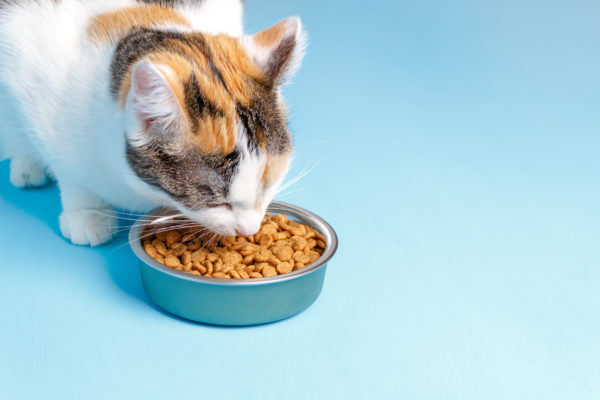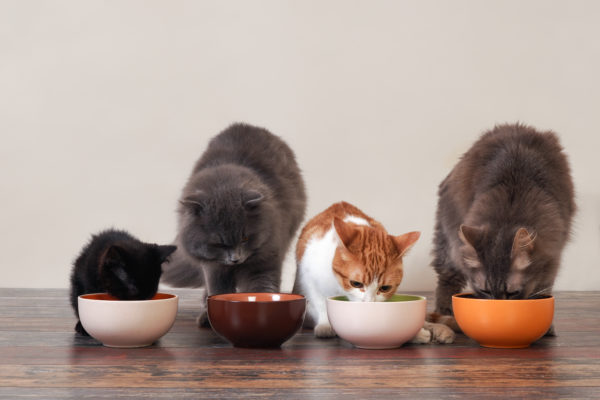LOOKING BEYOND THE INGREDIENT LIST: MAKING SURE YOUR PET GETS THE NUTRIENTS THEY NEED
As a good pet owner, you want to feed your cat or dog the best possible diet. You diligently check the ingredients on the back of the bag and compare all the food options on the shelf. But just looking at the ingredient list isn’t enough to make an informed decision. Why? Because it doesn’t tell you anything about the quantity or quality of the nutrients the food contains—nutrients that are so essential to your pet’s health.
But wait, aren’t nutrients and ingredients the same thing? As it turns out, no. They’re often used interchangeably, but mean very different things. Globalvet is here to help you understand the difference.
To put it simply, ingredients are the vehicles that transport vital nutrients your pet’s body. Here’s a breakdown of their respective roles:
Ingredients:
- Deliver nutrients to your pet
- Make nutrients taste good
Nutrients:
- Are vital for growth, tissue and organ repair, and reproduction
- Fuel metabolism
- Carry substances into, through, and out of the body
- Maintain body temperature
- Provide energy
Nutrients fall into 6 main categories:
- Vitamins
- Minerals
- Lipids (provided by vegetable oil for example)
- Proteins (provided by chicken for example)
- Carbohydrates (provided by corn for example)
- Water
Cat and dog food manufacturers use different combinations of ingredients in their formulas to deliver the right mix of proteins, carbohydrates, fats (or fatty acids), and other nutrients.
Let’s say the ingredient list on your cat food includes chicken. Seems like a good thing, right? But why? Because chicken contains a lot of nutrients your cat’s body needs, like proteins, fatty acids (or lipids or fats), vitamins, and minerals. But you have to look beyond the ingredient list because it doesn’t give any indication of the quality of the ingredients used or the quantity of nutrients they deliver. Ingredients can vary in terms of digestibility, amino acid content and availability, mineral availability, and the amount of non-digestible fillers they contain. Unfortunately, there’s no way to gauge quality just by reading the ingredient list.
Ingredients are listed in descending order by weight, from heaviest to lightest, but the weight is calculated before processing. If the manufacturer used whole chicken, it will be listed first because it’s high water content makes it heavy. Remember that just because it tops the ingredient list doesn’t necessarily mean it transports the most nutrients. And Once chicken has been cooked to be processed into kibble, it loses much of its water content (and therefore its weight) and gets bumped way down in the ingredient list as a result. What this means is that ingredients that are lower on the list, such as chicken meal, may actually contain a higher concentration of protein.
Did you know it takes 6 to 7 times more fresh chicken than chicken meal in your pet’s diet for them to get the same amount of nutrients? Pound for pound, it’s better to see chicken meal in the ingredient list than whole chicken because it tends to be packed with more nutrients.
Wondering why pet food labels provide limited nutritional information? Read this post on the topic from our partner, Hill’s.
WHAT ARE MY PET’S NUTRIENT NEEDS?
Obviously, there’s no one-size-fits-all standard. A nutritious, balanced diet depends on a few factors specific to your cat or dog. Even if we could give you exact numbers, they’d inevitably fluctuate with changes in your pet’s health and lifestyle. But that’s one of the reasons your veterinary team is there: to offer advice on every aspect of your pet’s health, including nutrition.
As a general rule of thumb, cats and dogs need some 40 essential nutrients—but in the right amounts and from high-quality sources for a healthy, balanced diet that meets their daily calorie intake requirements.
Pet nutritional needs vary based on:
- Age
- Level of activity and lifestyle
- Environment
- Health condition
- Whether they’ve been sterilized
Just like nutritional deficiencies, excess nutrients can also be harmful to your canine or feline companion’s health. Depending on the nutrients they receive in excess, your pet could develop diabetes, obesity, cardiovascular disease, respiratory problems, joint problems, liver or kidney disease, bladder stones, or bone disorders.
For example, excess protein in your pet’s diet is stored as body fat and can contribute to obesity in the long run.
Feeding your pet a vet-recommended diet designed to meet their needs at their specific life stage (puppy/kitten, adult, senior) will help ward off nutritional deficiencies and excesses.
WHAT DOES “QUALITY” NUTRITION MEAN, EXACTLY?
Makers of veterinary diets strive for an optimal mix of nutrients formulated according to these principles:
- Ingredients should be selected for their nutritional value, quality, and taste.
- A balance of quality ingredients combines protein, fat, carbohydrates, fibre, vitamins, and minerals.
- A balanced diet isn’t dependent on one (or even a few) ingredients: pet food is the sum of all of its parts. Just like your secret spaghetti sauce, you need the right ingredients in the right amounts, cooked to perfection!
Concerned about your fur baby’s diet but feel a little lost deciphering the pet food label? Not to worry! Our blog post can help you unpack the packaging.
Need some direction deciding on the right diet for your pet? Globalvet’s nutrition experts are here to help. Or maybe you have some basic questions about your pet’s nutrition. Check out our Nutrition section or contact your Globalvet team. They’d be happy to help!
Because we take your pet’s health to 💙.



